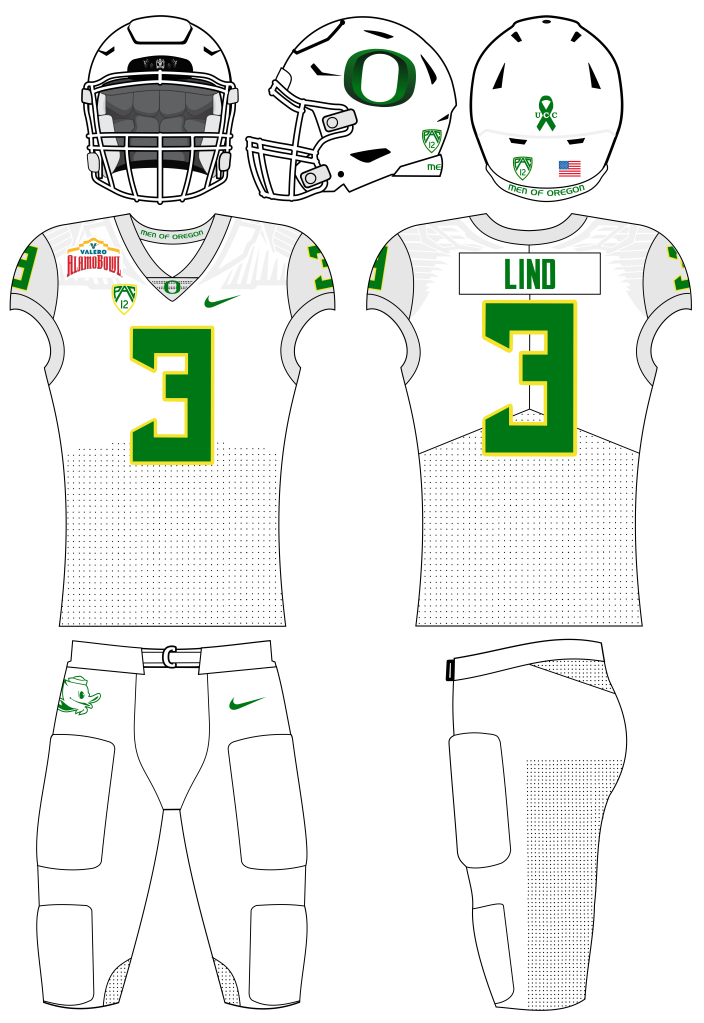Minutes after he watched Colorado bury his alma mater in the 1996 Cotton Bowl, Nike founder and chairman Phil Knight asked Oregon head coach Mike Bellotti what it would take to get the program to the next level. Though the immediate answer was an indoor practice facility – for which Knight donated $10 million – the impact of that conversation has been far more reaching.
Upon returning to Nike’s headquarters, Knight called a meeting with one of his most trusted executives, Tinker Hatfield, the company’s vice president for design and special projects.
“He simply said, ‘I want you guys to come up with some ideas on how we can help the University of Oregon improve the ability to recruit better student-athletes for the football program,’” Hatfield recalled.
That’s the moment college football’s infatuation with alternate uniforms began.
The Ducks debuted their new look in the first game of the 1999 season, but it was their home uniform that made waves. Draped in two-tone green and bright yellow uniforms, Oregon quickly became an attractive destination to recruits.
“It helped us get visits from kids that were four-star and five-star (prospects),” then-defensive coordinator Nick Aliotti said. “Way back when we were a second-class citizen, coaches would say, ‘Don’t even look at these guys because they’re not for you. Now, when we show up, we have the strongest hand. We carry the largest trump card.”
With that, Oregon was on its way to becoming a national power simply because of its flashy uniforms.
Though the Ducks have yet to win a national title – a pair of championship game appearances (2011 and 2015) are notable, however – college football programs across the country have tried to emulate their on-field successes by wearing alternate uniforms.
Oregon, on the other hand, hopes to maintain that recruiting advantage by introducing bold and edgy uniforms every three or so years, and Nike continues to be at the forefront of innovation.
“You must be so proud,” Hatfield said to Knight after the Ducks cinched a spot in the inaugural four-team playoff during the 2014 season. “You initiated this. None of this happens without you.”
Since 1999, Nike has created 20 different uniform templates for its more than 60 Football Bowl Subdivision schools. Here’s a detailed look at each:
1999
Nike’s first few templates were less about the fabric and more about the overall design, and therefore cannot be easily identified by a catchy name. The all-black uniforms and new iridescent green helmet were – as noted – a far cry from the more traditional look that Oregon wore prior to the 1999 season, but immediately became a talking point for recruits across the country.
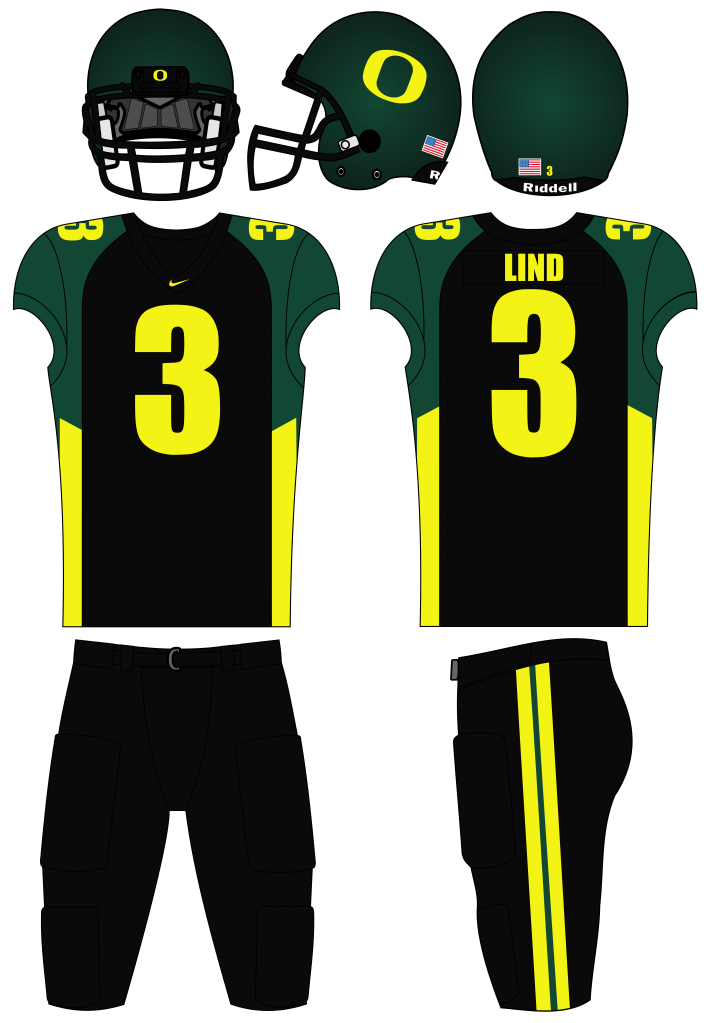
The apparel company also introduced a progressive design at BYU, where the Cougars adopted a darker blue and tan color scheme and uniforms that made it appear as if players were wearing a bib. The NCAA forced BYU to change their uniforms after only one season, as it was concerned that the white front would cause difficulty differentiating between home and away jerseys.

2000
The overall template remained the same one year later, but Nike unveiled another version which lacked the breathable mesh fabric that was a staple of all previous college football uniforms. For the first time, teams that played a majority of their games in cold weather could be outfitted in a heavier material that would keep their players warm.
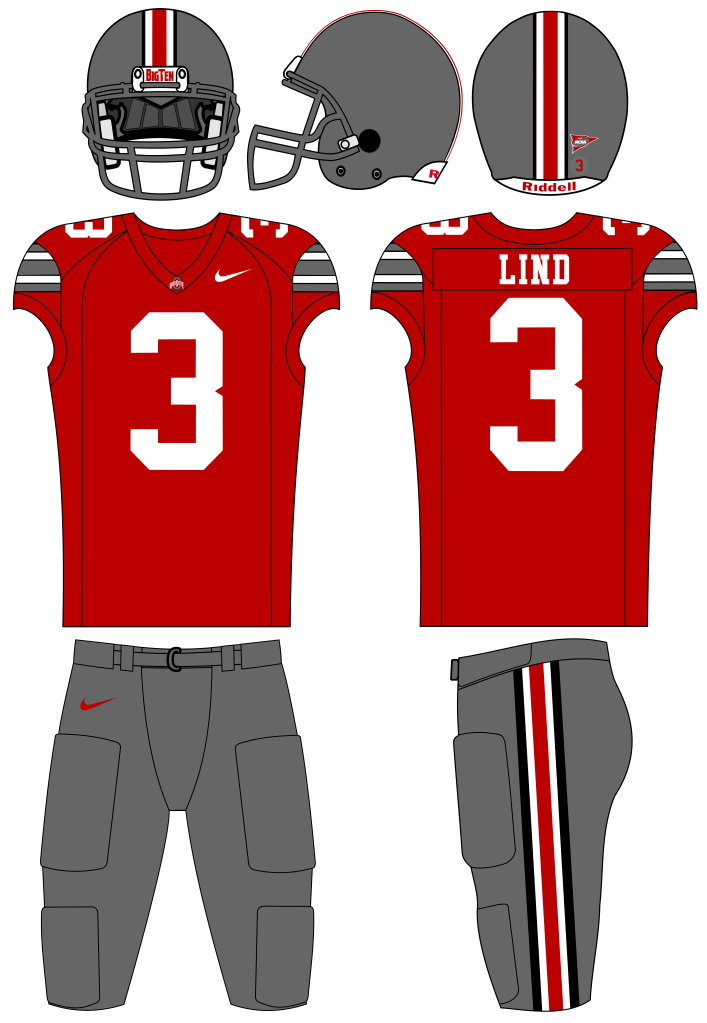
Miami forged a special relationship with Nike when it became the first collegiate program to sign an exclusive all-sports contract with a retailer in 1987. Thirteen years later, the Hurricanes introduced new uniforms that are synonymous with the most successful run in school history. This template was the first to be widely available for other college programs to purchase through the Nike catalog.

2003
Oregon underwent its second radical change when it wore eye-popping Electric Lightning Yellow uniforms in the 2003 season opener at Mississippi State. The threads featured a sublimated diamond-shaped pattern on the shoulders, which Nike claimed would help keep it stay tight against a player’s shoulder pads. The Ducks began to interchange elements of the uniform for the first time that year, too.

2004
Nike once against shifted its focus to South Florida in 2004, when Miami started wearing threads that focused just as much on fabric and functionality as design. Ventilation holes were strategically placed along the collar to allow heat to escape from the shoulder pads, while the wraparound piping still gave the Hurricanes a unique look.

2005
Beginning to recognize the merchandising opportunities brought on by one-off uniforms, three Nike schools – Florida, Miami and Virginia Tech – wore their standard jerseys with a single orange sleeve and an optional undershirt that continues that look along the players’ left arm. Aesthetically, the Revolution template made little sense other than it offered fans a chance to buy the same workout gear as the players.

2006
Nike continued to alter its uniforms and introduced its final nameless template to some of college football’s elite programs in 2006. Whereas Miami’s 2004 set had solid fabric across the chest, the front of this template was completely mesh. Additional seams also allowed for player movement, but also restricted sleeve designs.

2007
Some teams were unhappy with the design restraints of the previous template – it caused television numbers to be pushed onto the sleeves – so Nike created the Destroyer template in 2007. This was Nike’s longest-used template, as well, as teams like Oklahoma and Stanford held out for nearly nine seasons before upgrading.

Some programs opted for the Blaze template, also known affectionately as the Sports Bra. While the goal of the template was to improve ventilation along the front and back of a player’s shoulder pads, Oregon State’s design looked as if it was made with the intent to make the Beavers look bad. Though, I suppose a certain Nike chairman and Oregon alum would say he had nothing to do with it.

The Crack Back template was not much different than the Destroyer, but offered a sleek design element down the front of the jersey that was initially exclusive to West Virginia. It was inexplicably copied by Virginia Tech – once considered a big-time rival of the Mountaineers – several years down the road.

2008
Nike debuted its Enforcer template for the 109th rendition of the Army-Navy Game. The company touted that the uniforms were more form-fitting and incorporated inspiration from two of the nation’s military units. This template was immediately available through the Nike catalog, and became a go-to for Group of 5 schools
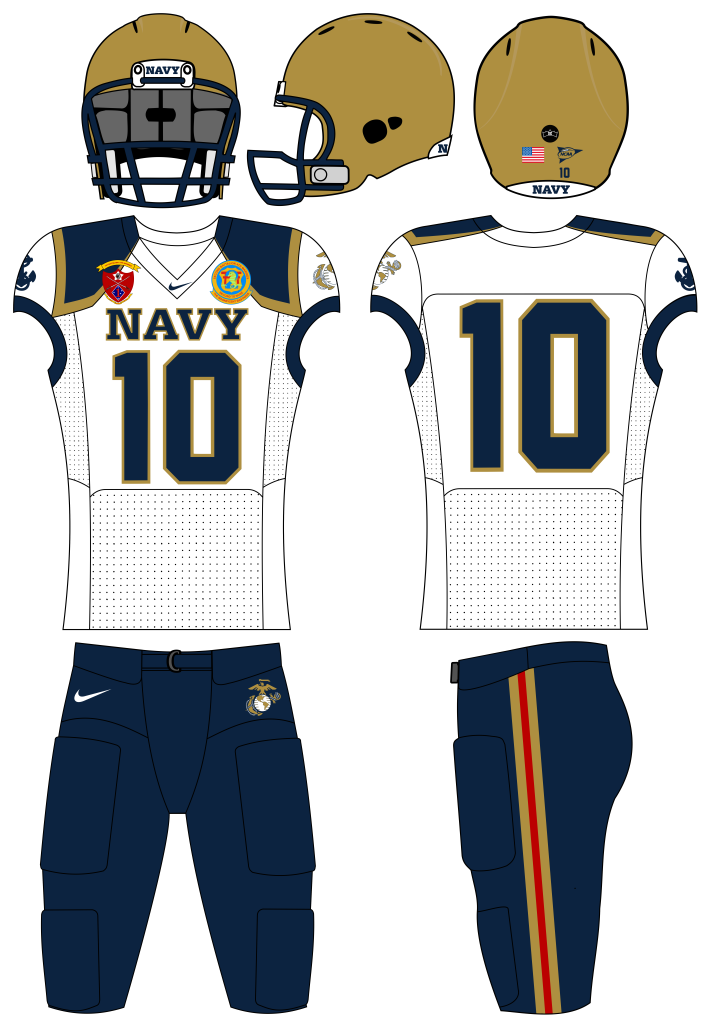
2009
Considered at the time as Nike’s lightest system of dress, the inaugural Pro Combat template was worn by 10 of college football’s elite programs. The uniforms featured Flywire on the shoulders, which helped the fabric stay tight against shoulder pads during impact. The uniforms, themselves, took inspirational cues from the history of each program.

2010
The second iteration of the Pro Combat template was the exact same as the previous design, but lacked Flywire on the shoulders. Some teams stuck with a more traditional look, while others programs – like Boise State, Virginia Tech and Miami – pushed the envelope with more progressive designs.

2011
Alternate uniforms were a weekly phenomenon by 2011, so Nike opted to drop the promotional aspect of its uniform designs. The company instead revealed the Speed Machine template when Oregon took on Auburn in the 2011 BCS National Championship Game. This template had an enlarged collar with Flywire, which helped keep the jersey in place when an athlete was tackled.
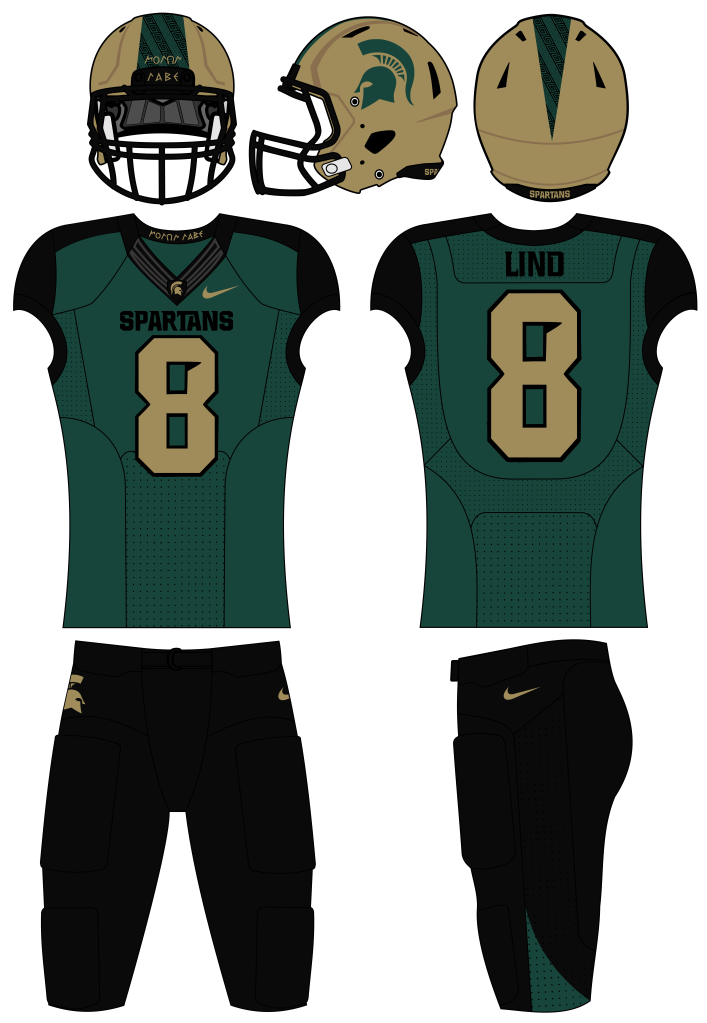
2012
Nike once again used Oregon’s appearance in a BCS Bowl as a chance to debut another template; the company outfitted the Ducks in the Hypercool template for the 2012 Rose Bowl. The template, which featured Chain Maile mesh under the armpits and on the back shoulders to allow for more ventilation than past uniforms, was adopted by teams – like Texas -participating in Nike’s new Rivalry line.

Nike made a minor alteration to the third-generation Pro Combat template for teams with shoulder stripes. While hardly noticeable to the casual fan, LSU first wore the new style in the 2012 Chick-fil-a Bowl against Clemson.

2013
Oregon once again unveiled a template during the 2013 bowl season. The Mach Speed template featured panels of fabric on the chest that replicated the shoulder pads underneath, which allows the uniform to move with the athlete more effectively. Each of the four teams that participated in the inaugural College Football Playoff one year later donned special Diamond Quest Mach Speed uniforms, including Florida State, the only difference from the original template being the reflective diamond swooshes.
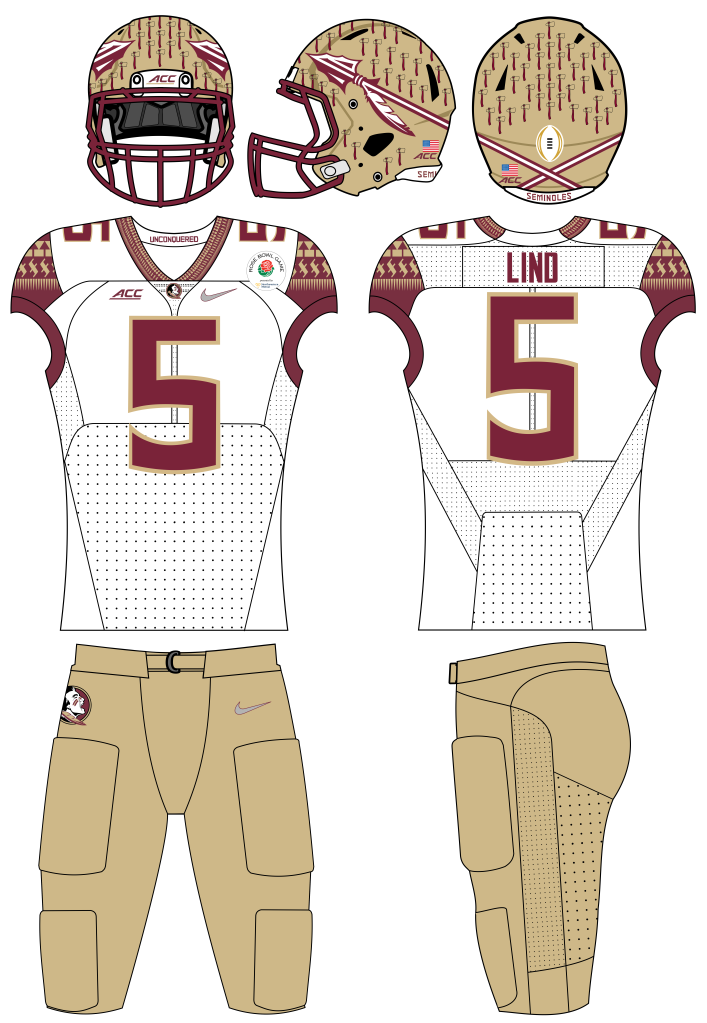
2015
The most recent Nike template made its debut at the 2015 Alamo Bowl. The Vapor Untouchable template features minimal seams and fewer panels, creating a shrink-wrap feel and fewer grab points on the jersey.
